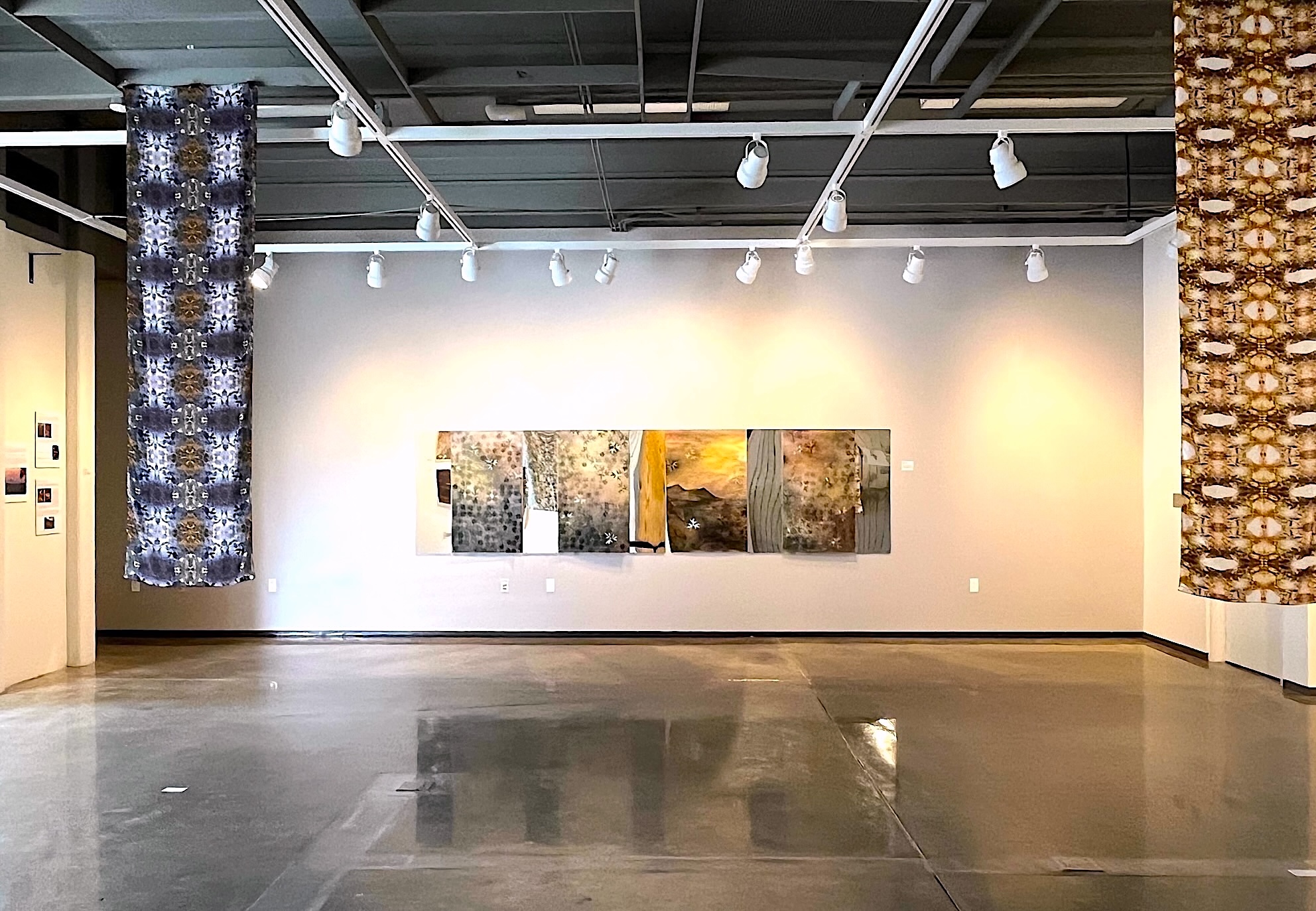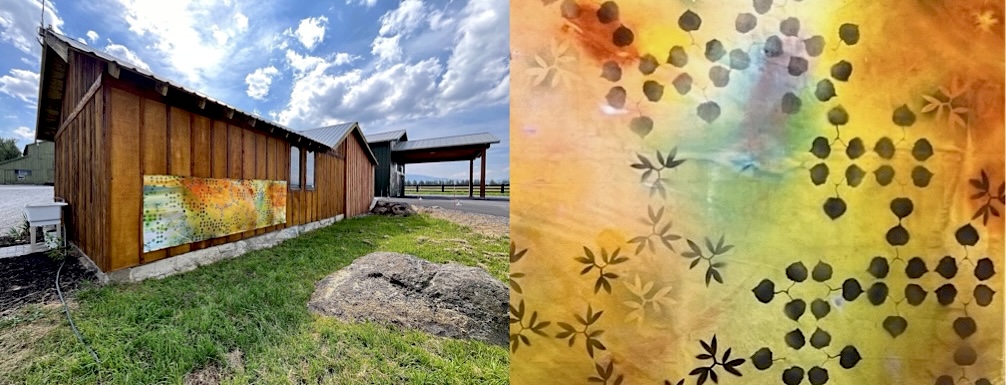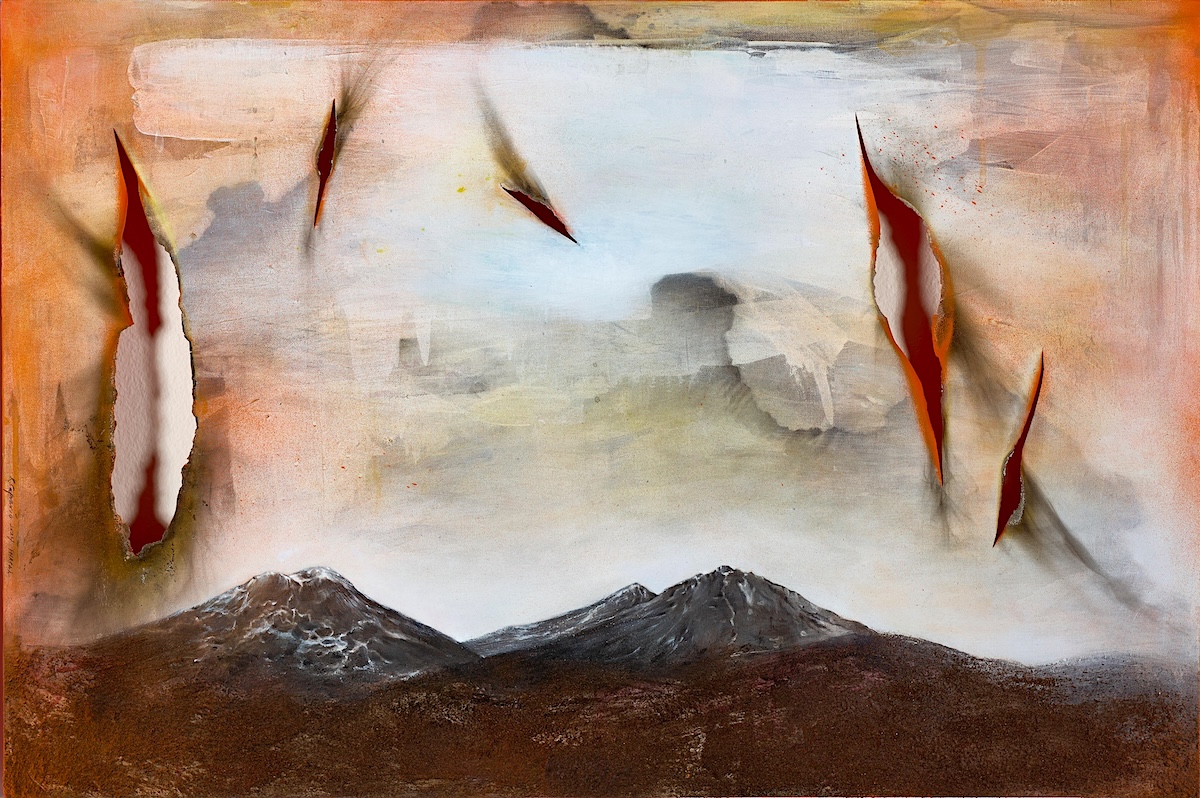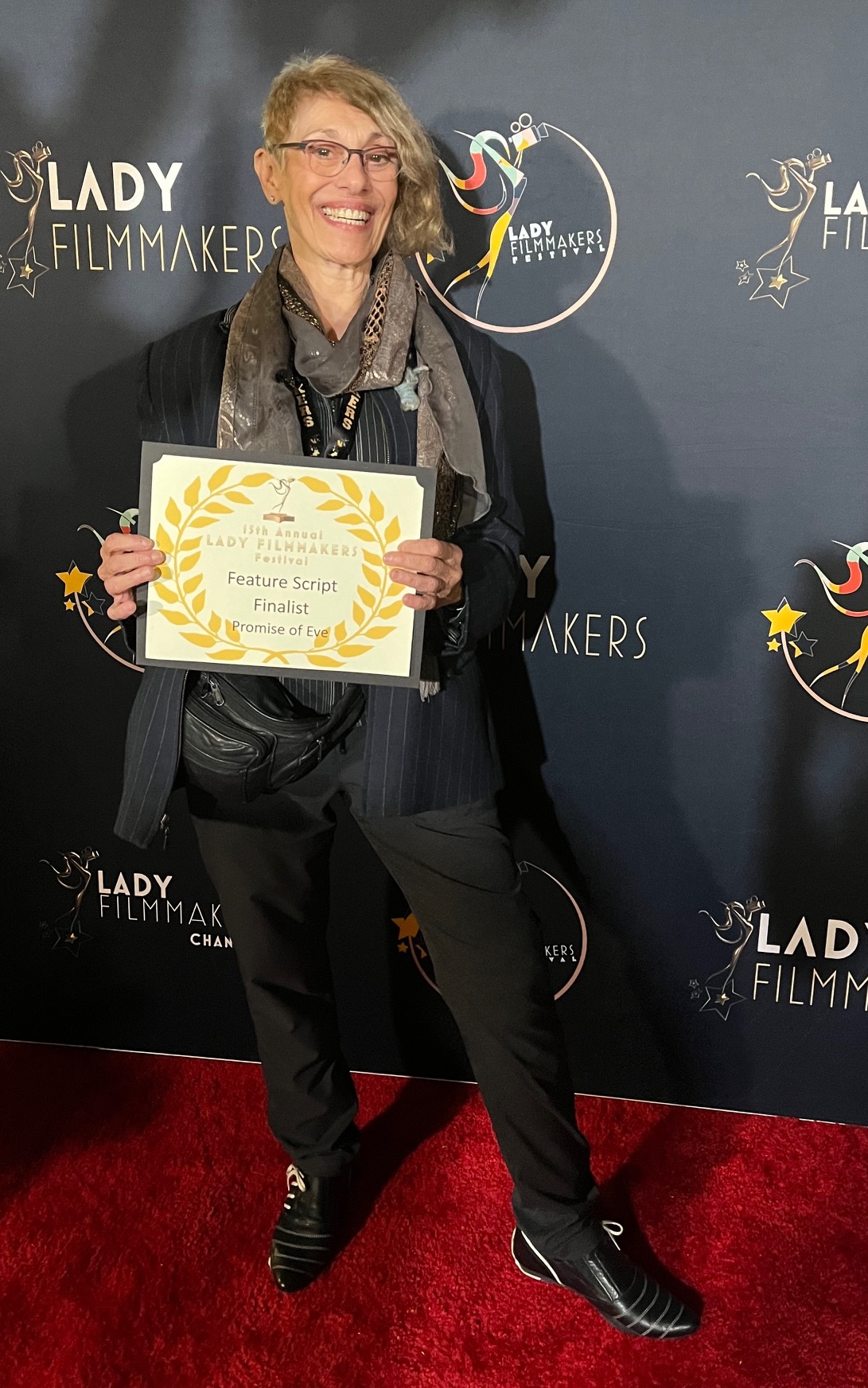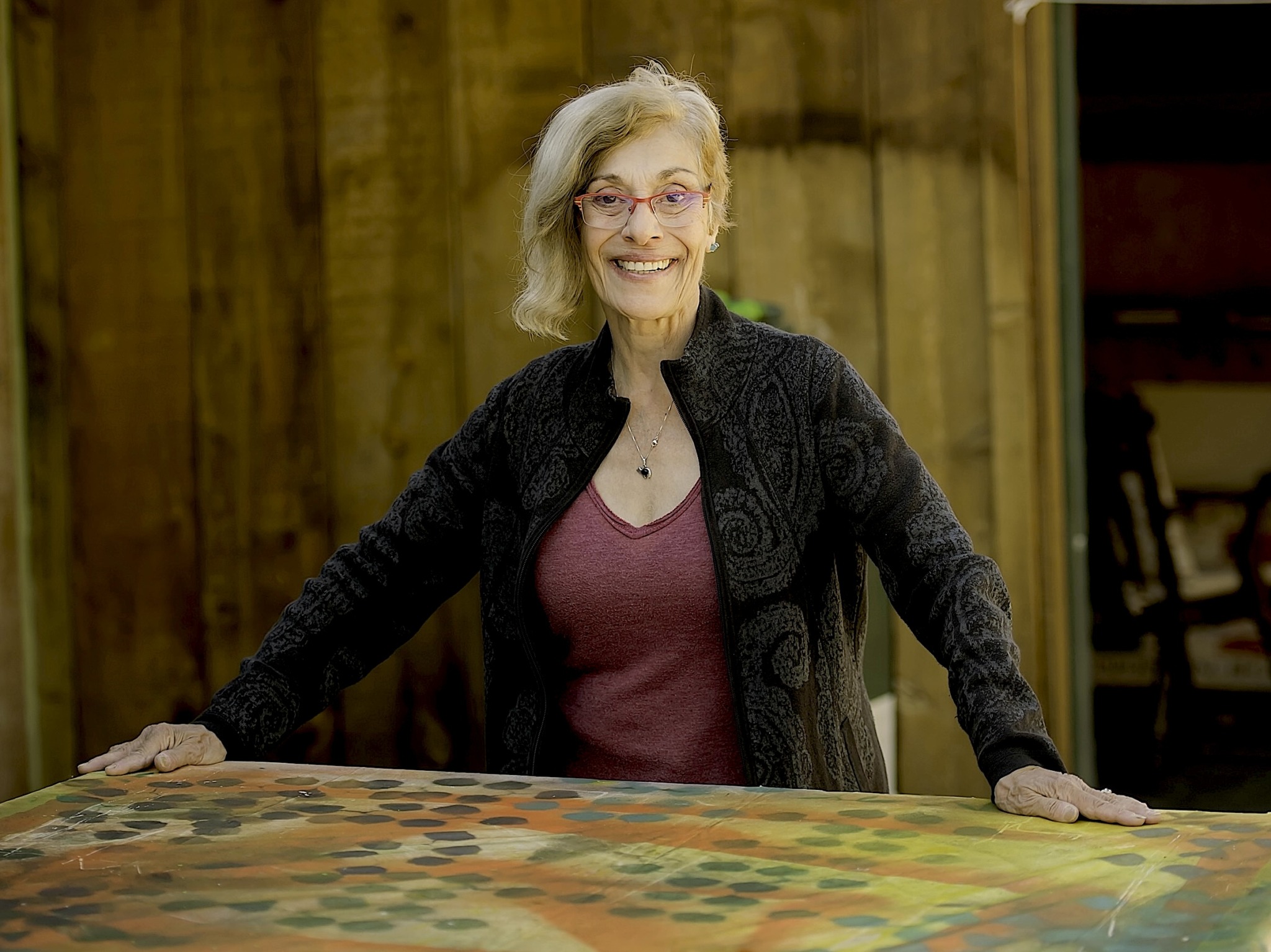Alright – so today we’ve got the honor of introducing you to Kathleen Caprario-Ulrich. We think you’ll enjoy our conversation, we’ve shared it below.
Kathleen, thanks for taking the time to share your stories with us today We’d love to hear the backstory behind a risk you’ve taken – whether big or small, walk us through what it was like and how it ultimately turned out.
Rather than having to pivot — I chose to do so.
I love words and have been an avid reader my entire life. Whether taking the form of an artist statement, social media posts, or a grant or residency application…words are an important part of my visual art practice. However, as much as I appreciate words and use them to support my artwork, I never considered myself a writer. I was a visual artist. I couldn’t be both…or could I?
A dozen years ago, I decided I wanted to do something terrifying, but safe. No jumping out of airplanes, thank you very much. I settled on stand up comedy. My written jokes and bits soon became short stories. And, being a visual thinker, it was a natural next step for me to develop those story ideas as scripts. Screenwriting is an especially visual written form, and makes good use of my observational abilities and attention to specifics. Over the ensuing years, I’ve completed several feature scripts, won and placed in competitions and currently have a pilot script shopped, on my behalf, in Los Angeles.
On occasion I’m asked why I can’t just be satisfied and stay in my own tidy, visual arts lane? My reply is often — why feel so obligated to limit and restrict yourself when there are many folks out there waiting and eager to do that for you? My visual art and writing practices are created in tandem and inform one another. I’m currently working on a new feature script set in Central Oregon that is inspired by the research and mixed media artwork done at a 2024 residency at the Pine Meadow Ranch and Center for Arts & Agriculture, Sisters, OR.
As always, we appreciate you sharing your insights and we’ve got a few more questions for you, but before we get to all of that can you take a minute to introduce yourself and give our readers some of your back background and context?
I’m a “naturalized” Oregonian—someone who has adapted to and positively integrated herself, over time, to her adopted home. Born and raised in working-class New Jersey, I made a transformative decision to leave a career in textile design for the open skies of Oregon’s Willamette Valley. It’s where I raised my son, established myself as an artist, writer, art educator and occasional stand up comic — and where I discovered my life-long subject: the land.
My creative practice embodies adaptability, bridging disciplines and evolving to include hand-generated mixed media paintings, artist-designed textiles, site-informed installations, and writing — both screenplays and place-centered nonfiction. I experience the world through story and the universal language of pattern, which surrounds, differentiates, and connects us to each other and the shared context that sustains us — the environment. I’ve recently begun to incorporate stitching into my process; textile work is a growing area of knowledge for me, connecting with my identity and a family history of women hand-workers. Through my experiences, one personal truth emerges: The sense of place embedded in the land is physical, metaphorical and spiritual. Identity — my own and others — is embedded in place. I carry this sense of self, intersecting with place, into my work with hope and wonder.
Acknowledgements and awards for my visual work include: Oregon Arts Commission’s Individual Artist Fellowship and Career Opportunity Grants, a Jordan Schnitzer Black Lives Matter Artist Grant, several Ford Family Foundation Residency Fellowships and the Modesto Lanzone Mostra 99 Award. An avid traveler, I’m informed by place and have had the opportunity to participate in supported artist residencies including the Pine Meadow Ranch Center for Arts & Agriculture, Djerassi Foundation, Ucross Foundation, Vermont Studio Center, HJ Andrews Experimental Forest, Morris Graves’ Foundation, Playa @ Summer Lake, Virginia Center for the Creative Arts, ARIS, Hakone, Japan, and Victoria University’s S.W.I.R.L Program, Central Australia.
My writing practice centers female-driven stories that celebrate the awkward process of reinventing one’s life after a personal, seismic shift — something I know first-hand. Writing accolades include my short story, “Standing In Water,” being nominated by the Timberline Review Journal for the 2024 Pushcart Prize in fiction. My in-process, debut novel of the same name is informed by the painfully funny process of reinventing one’s life after a personal, seismic shift. My comedy and dramatic scripts have won and placed in competitions, including the Lady Filmmakers Film Festival, Kay Snow Fiction and Script Competitions, the Garden State Film Festival Short Script Competition and The California Women’s Film Festival Short Script Competition, among others. I wrote, produced, and presented my dark comedy, short film “Mourning After” as part of the Non-Juried Short Film Corner at the 67th Cannes Film Festival, France.
What can society do to ensure an environment that’s helpful to artists and creatives?
Bring art education back into every school — public and private — as a part of basic curricula. Creative literacy early in life contributes toward the development of one’s critical thinking abilities and increases innovation, collaboration, mental health and personal satisfaction. It’s part of a well-rounded education and citizenry, period.
All cuts to publicly-funded programs must be strenuously protested and politically-based censorship, soundly rejected. Art and cultural aren’t just for those who can afford it. Despite growing up in working-class Jersey, I was routinely introduced to the world of cultural diversity through museums, ballet, music, film and poetry. Through that cultural exposure I learned to value ideas different than mine and to imagine a world filled with possibility.
Regard artists as the professionals they are and compensate them fairly. No other professional group is routinely expected to work for little or no pay. Many people still think of career creatives as hobbyists and have the misconception that they don’t contribute significantly to local, regional and national economies. The arts are a dynamic sector that increases competition and productivity, and promotes sustainable economic growth. in addition, public funding of the arts needs to be increased rather than eliminated. Even if you’re not an artist or art aficionado you benefit from the side effects of art. Just imagine what your life would be like without the products, services, and experiences that are connected to and a part of what is called art. Bland, empty and boring come to mind.
In her 1992 book, Homo Aestheticus: Where Art Comes From and Why, author Ellen Dissanayake states, “Art is a normal and necessary behavior of human beings that like other common and universal occupations and preoccupations such as talking, working, exercising, playing, socializing, learning, loving and caring should be recognized, encouraged and developed in everyone…” https://ellendissanayake.com/
Let’s talk about resilience next – do you have a story you can share with us?
Seven weeks after 9/11, I was unexpectedly widowed. I was left a single mom with a teenage son to raise and a mortgage to pay.
Needless to say, my creative career was put on hold. Put on hold? Events necessitated that it come to an abrupt and screeching halt. Previous to my husband’s death I was represented by a gallery, and regularly showed and sold my work. However, it wasn’t just that I had a lot of other things on my ever-growing plate to deal with that ate into my studio time and limited my once-formidable muse — turns out, she’d left the building.
I couldn’t paint, draw or even doodle. It was as if I’d forgotten how to, or never had. I continued to go into the studio, albeit as a visitor. Sometimes I would sweep and straighten up that which did not need either, and other times I’d sit and study the objects that had been the well-known tools of my trade — brushes, tubes of color, palette knives — as if they were artifacts from some long-ago civilization. After several years of creative paralysis, I realized that the reason I couldn’t make art was because I couldn’t make the art I’d previously made. I had been forever changed, and I needed a new visual language in order to articulate my revised and reclaimed reality.
Twenty years ago I started my practice over, from scratch. Rather than a disadvantage, I chose to view it as a unique opportunity for reinvention and the space to interrogate and explore my work without prejudice or constraints. I made a commitment to maximize experimentation and celebrate risk in my work…to seek my truth and to do what I do best — make.
Contact Info:
- Website: https://caprarioart.com/home.html
- Instagram: https://www.instagram.com/kcapart/
- Facebook: https://www.facebook.com/kathleen.caprarioulrich
- Linkedin: https://www.linkedin.com/in/kathleen-caprario-ulrich-30931339/
- Twitter: https://twitter.com/kathcap1
- Youtube: https://www.youtube.com/shorts/Auis17rRXdI
- Other: BlueSky: https://bsky.app/profile/kcapart.bsky.social
